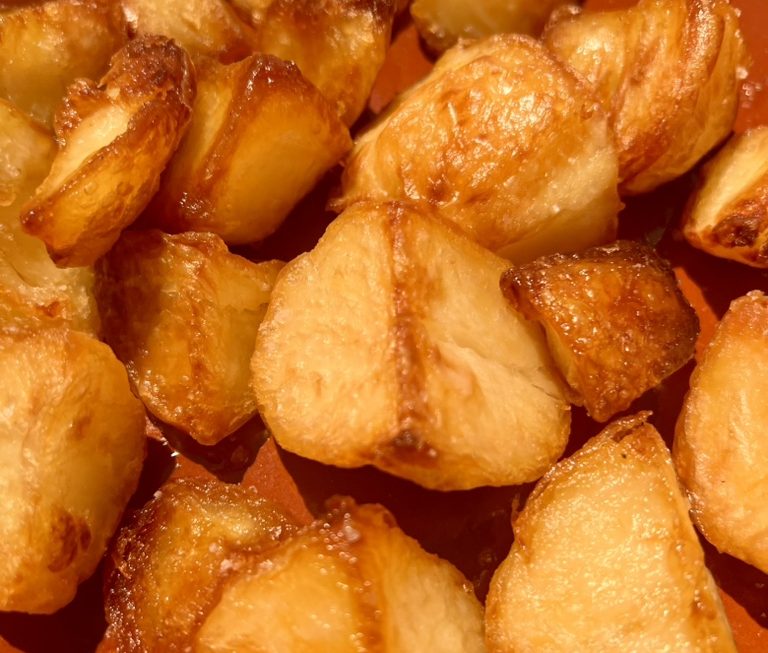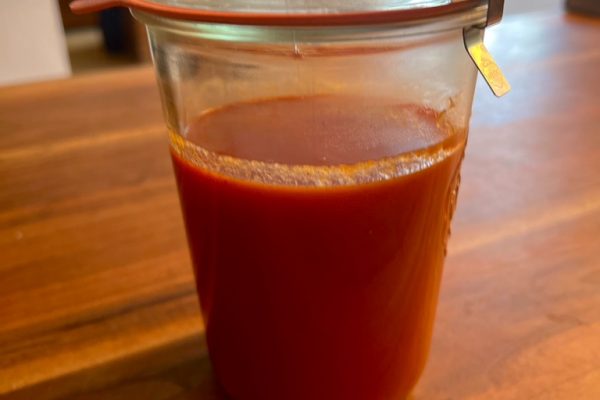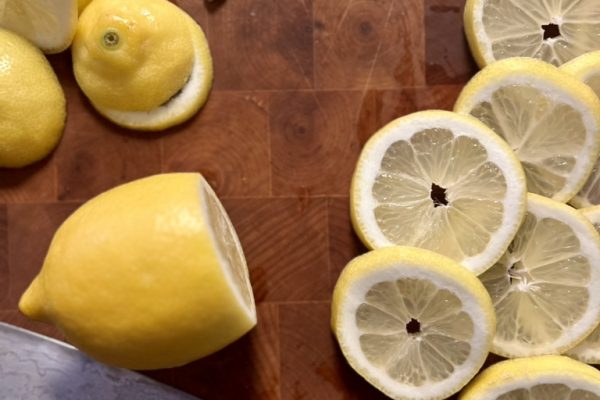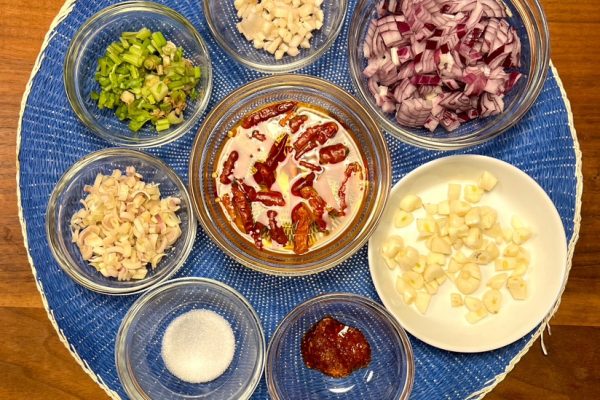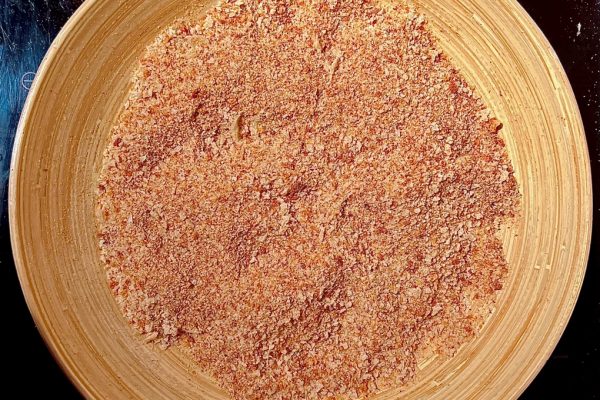Roast potatoes are such a basic dish and so extensively described that you have to ask yourself why you should contribute anything at all. Wouldn’t that be like saying: “Everything has already been said about it, except by me?”
No, it wouldn’t be, because the internet in particular is overflowing with recipes – including very good ones – that claim to be the best ever. We don’t believe that, but we do believe that these are the best preparations we know. And they are also very simple.
What’s more, the NextGens asked for this article and then they are getting it. In the spirit of this non-commercial blog, everyone else is cordially invited.
Our description is based on two different preparations, one from German-speaking countries, where sliced potatoes are fried in a pan, and the other from the UK, where larger pieces of potato are roasted in the oven. We like both, but think the second technique tastes better. The first is quicker.
Which kind of potatoes?
The varieties of potatoes are very diverse worldwide but are less relevant here, even if they do have special characteristics and flavours. The important thing to remember is that potatoes can be firm when cooked, soft (mealy) or somewhere in between. Soft-boiling potatoes are not very suitable for roast potatoes. What is described here works reliably with all other types.
Raw or pre-cooked?
There are recipes for roast potatoes that have not been pre-cooked. This is by no means impossible and can sometimes lead to a good result, but we expressly do not recommend it and therefore do not explain the technique. First boil the potatoes in salted water and only then roast them. If you really want to know how to do it without pre-cooking, feel free to write to us.
What quantity?
150 – 200 g raw potatoes as a side dish, 200 – 300 g as a main course per person.
Which oil or fat?
Vegetable oil with a neutral flavour is excellent. We don’t think that potatoes necessarily need anything else. If you want to use olive oil, we recommend a mixture with 50% neutral-flavoured oil. Butter is unsuitable, but clarified butter works very well and adds its flavour. Animal fat from beef, goose or duck is suggested in many recipes and naturally adds its respective flavour, but we do not use either.
In the pan:
That’s how it’s done historically where we live and it’s a very popular side dish, especially in Bavaria. You can cook the potatoes with their skin on and then peel them or cook them peeled – the difference in flavour is not relevant for this dish. We think that peeling before cooking is the easier option in this case.
The potatoes are cooked for 15 minutes – but this only applies to preparation in the pan. Then they are not yet fully cooked.
The cooked potatoes need to lose their moisture, so we pour them through a sieve and immediately return them to the hot pot on the still-warm cooker so that the potatoes steam out without requiring any additional energy.
As soon as the potatoes have cooled down a little, cut them crosswise into slices about 0.5 cm thick. If you have plenty of time, you can leave the potatoes to cool completely, although this will take hours – they will then hold their shape better.
Heat a heavy cast iron or non-stick pan to a medium heat – in our case to level 7 out of 10. If you want to eat the roast potatoes with onions and possibly also bacon, as is very common here in Bavaria, fry both first. All of these ingredients have different cooking points, so if you have the time, you should prepare them separately, otherwise one ingredient will not be cooked while the other is already burnt. And another tip: use the same pan for the potatoes afterwards and don’t wash it beforehand, of course, as this would only result in a loss of flavour.
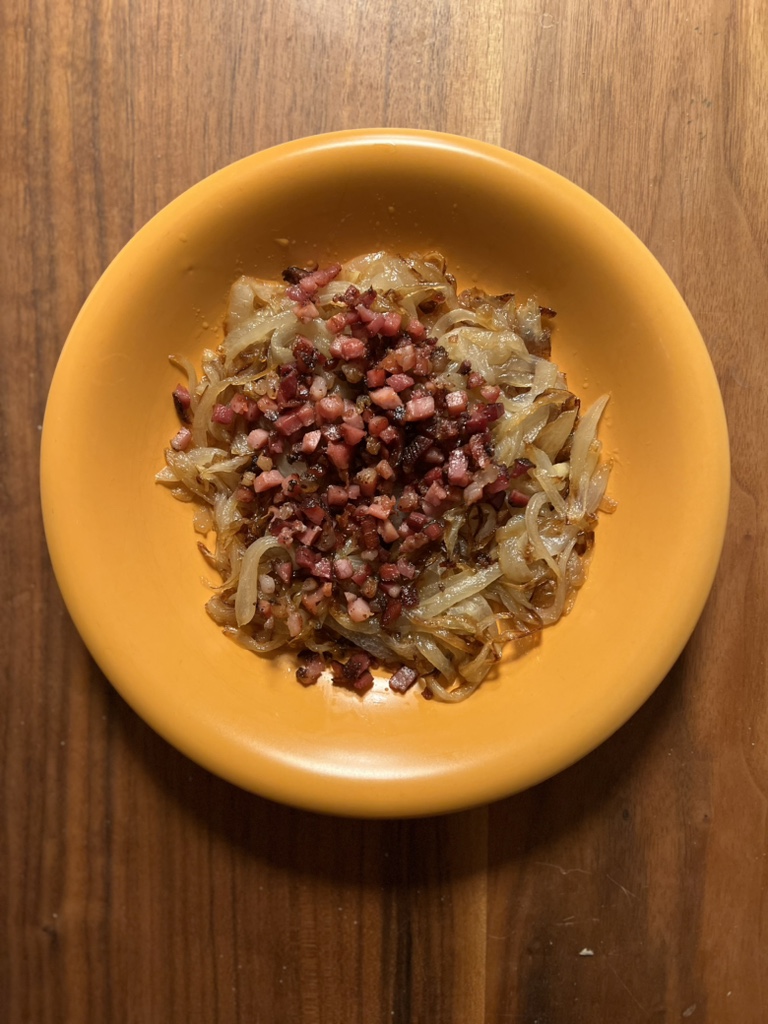
The slices are placed in the pan and, as when roasting meat, for example, are left to sit for a while. Constant stirring would be wrong, because the potatoes are supposed to roast and that takes time. The pre-cooked potato slices also break easily.
If you prepare a small portion in a large pan or have the time to roast the potatoes in slices, they will cook evenly if you place them next to each other. If you have more potatoes to prepare, carefully move the slices from time to time so that each piece can roast, as this is the only way to get the decisive flavour.
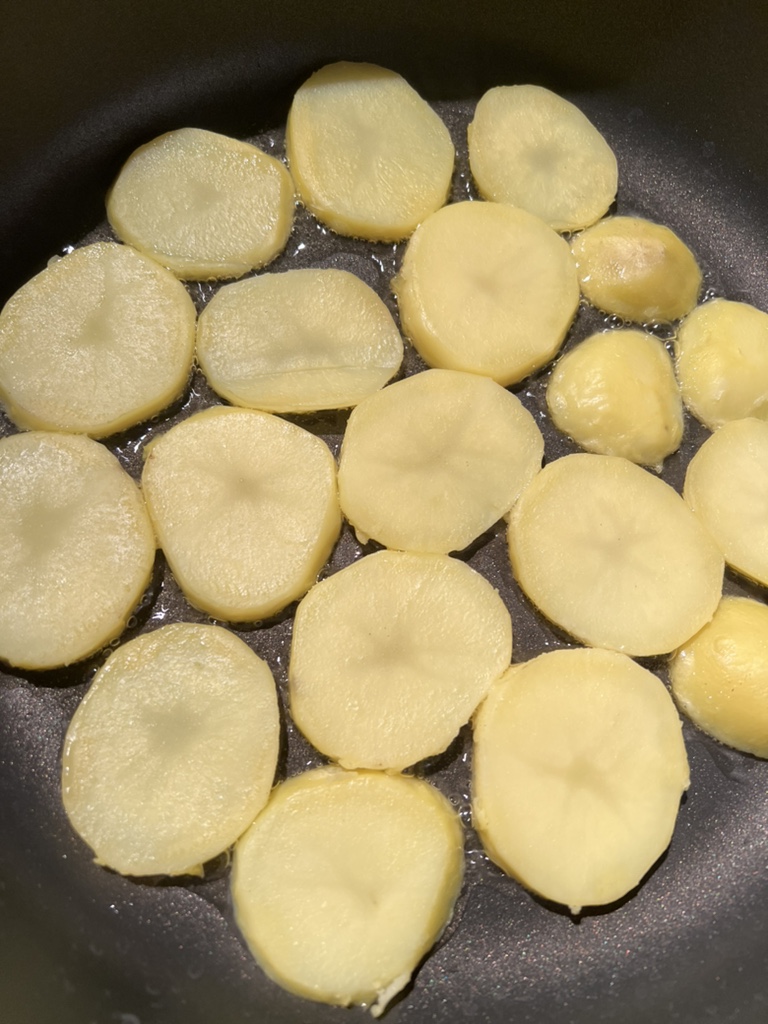
Only turn the slices over when they are golden brown. This can take up to 10 minutes.
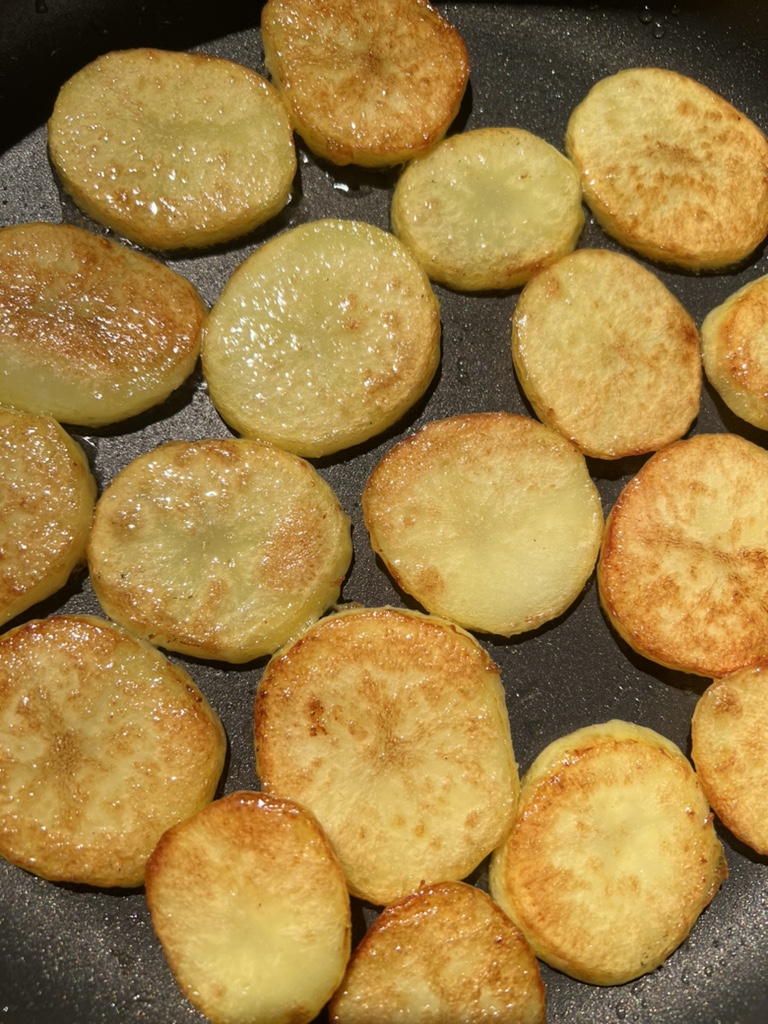
The second side will now cook much faster. Once it also meets your expectations, you can add seasoning. This is not done earlier, as the spices would otherwise burn due to the relatively long roasting time.
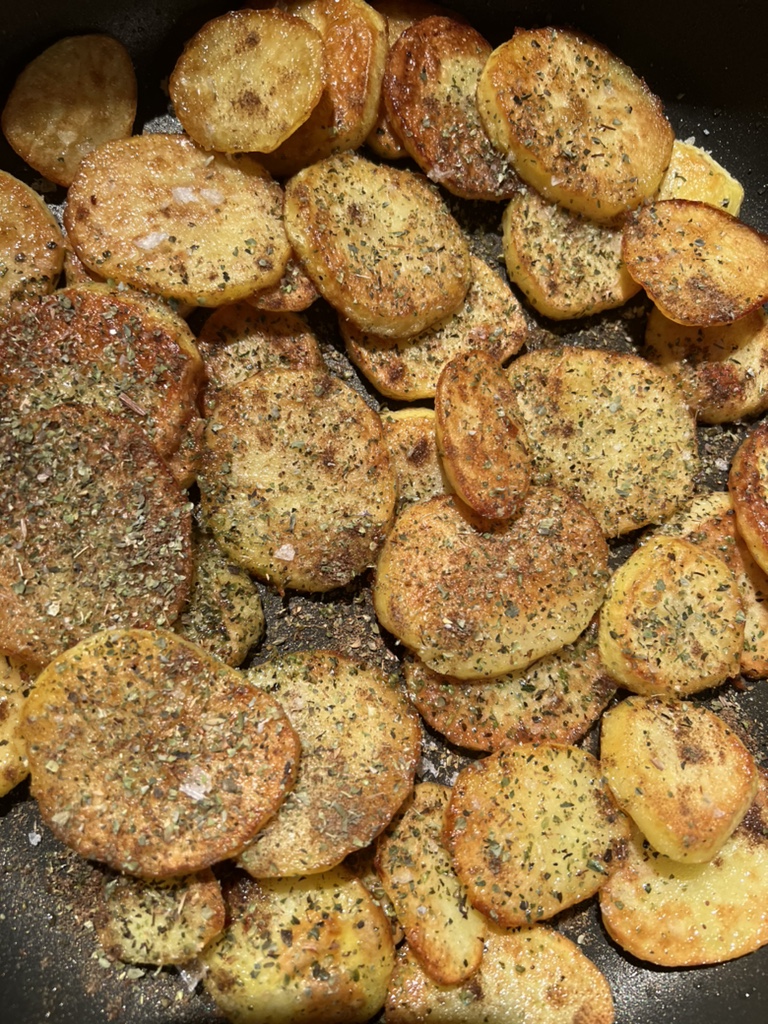
A typical seasoning for us would be salt, pepper, dried marjoram and a little ground caraway. This is a harmonious mixture that brings out the potato flavour very well. Dried thyme is also a good choice.
To distribute the spices well, toss the potatoes not too vigorously in the pan and you can do the same with onions and/or bacon if you wish.
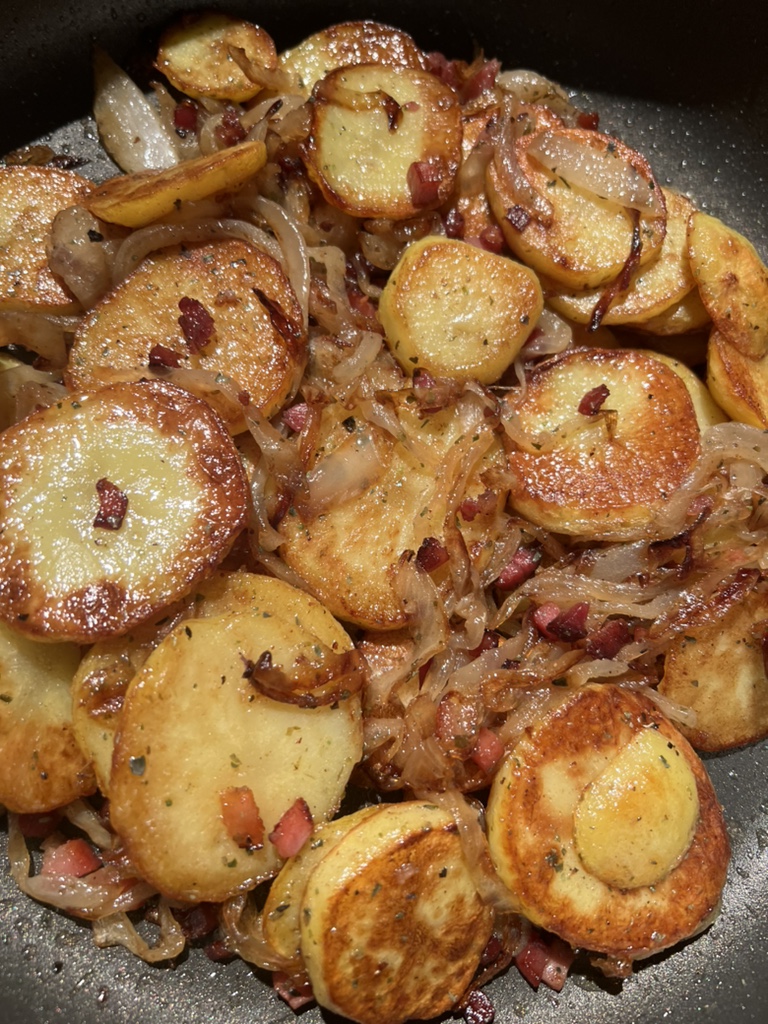
In the oven – the classic roast potatoes:
What “hacks” and “secrets” don’t you find on the subject? We do without fancy frills, peel our potatoes, cut them into large pieces 4 – 5 cm long and put them in water immediately so that they don’t discolour.
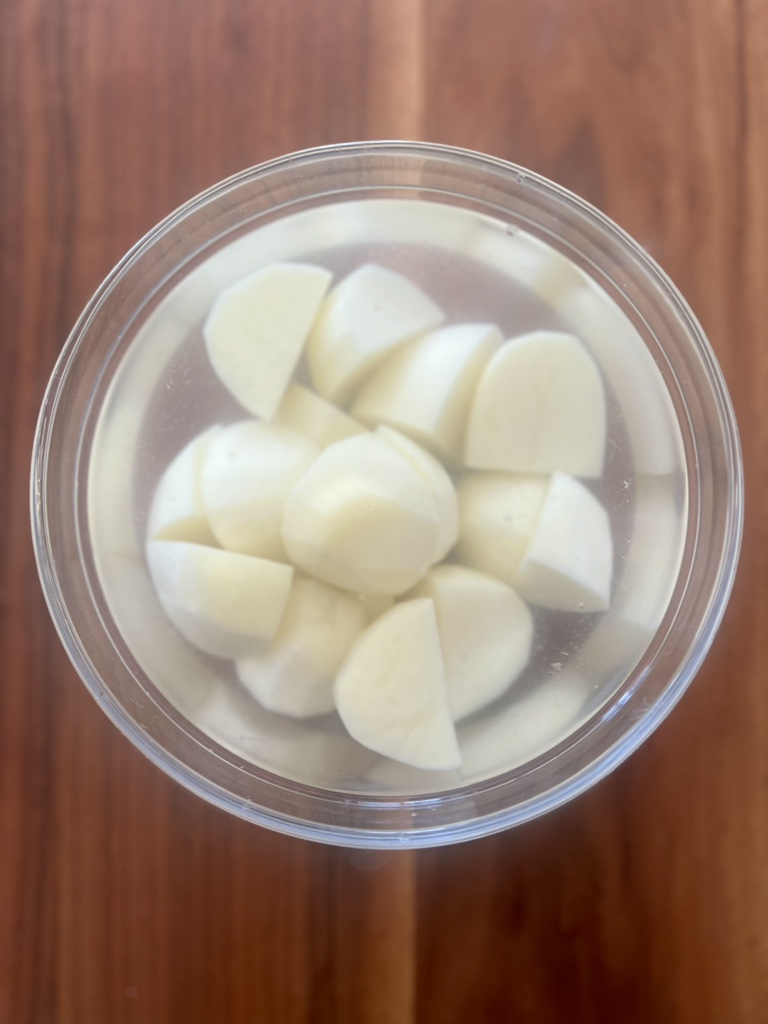
Once all the potatoes have been cut, they are drained and bathed two or three more times in fresh water to remove more starch.
Salted water is then heated to the boil. The potatoes are brought to the boil once over a high heat and then gently simmered over a medium heat for a whopping 25 minutes.
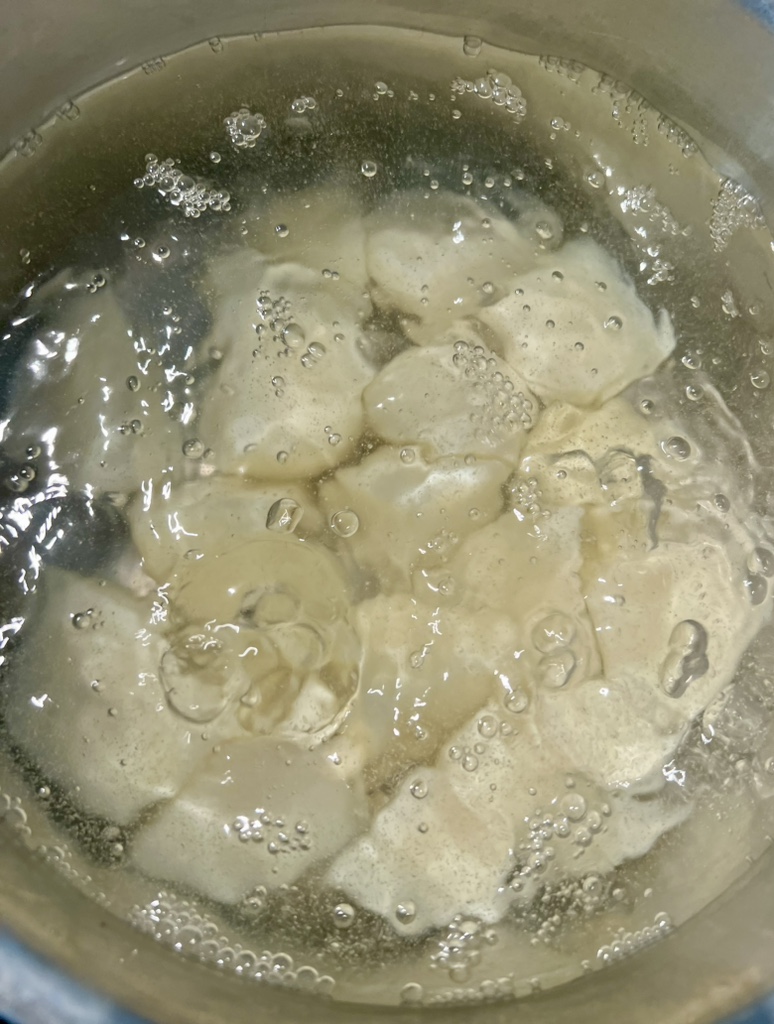
This is actually too long, most potatoes would be cooked in about 20 minutes. However, they should be cooked just beyond that, so that they almost fall apart. That’s why you have to handle them with a certain amount of care from there on.
The potatoes are poured through a sieve and then left to steam out and cool. The best way to do this is to place them on a wire rack. If you don’t have one, carefully put them back into the still-warm pot on the still-warm cooker. The longer you can be patient now, the better the end result will be.
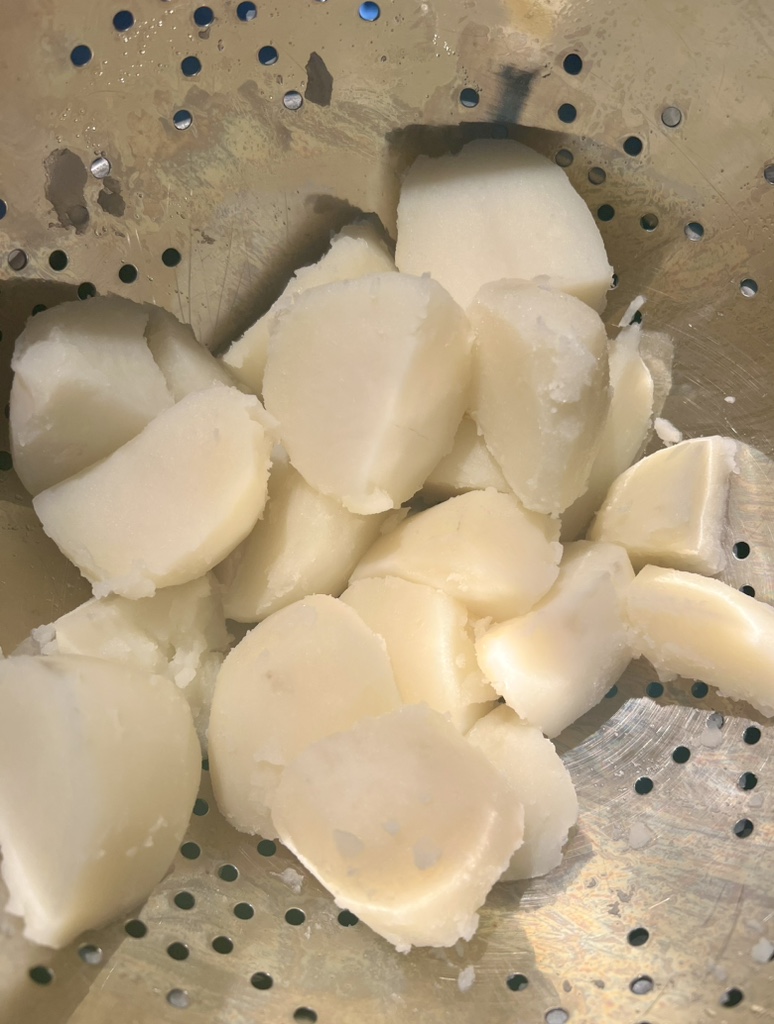
Now preheat the oven to 180 degrees Celsius with convection (only if you don’t have convection: 200 degrees).
Pour oil or fat into a large, deep baking tray. If you are using solid fat, you can let it melt in the oven. It should be at least 3 mm high in the tray. Then place the potato pieces in the oil and turn once with your fingers. It doesn’t matter if some of them break – these small pieces will be particularly crispy.
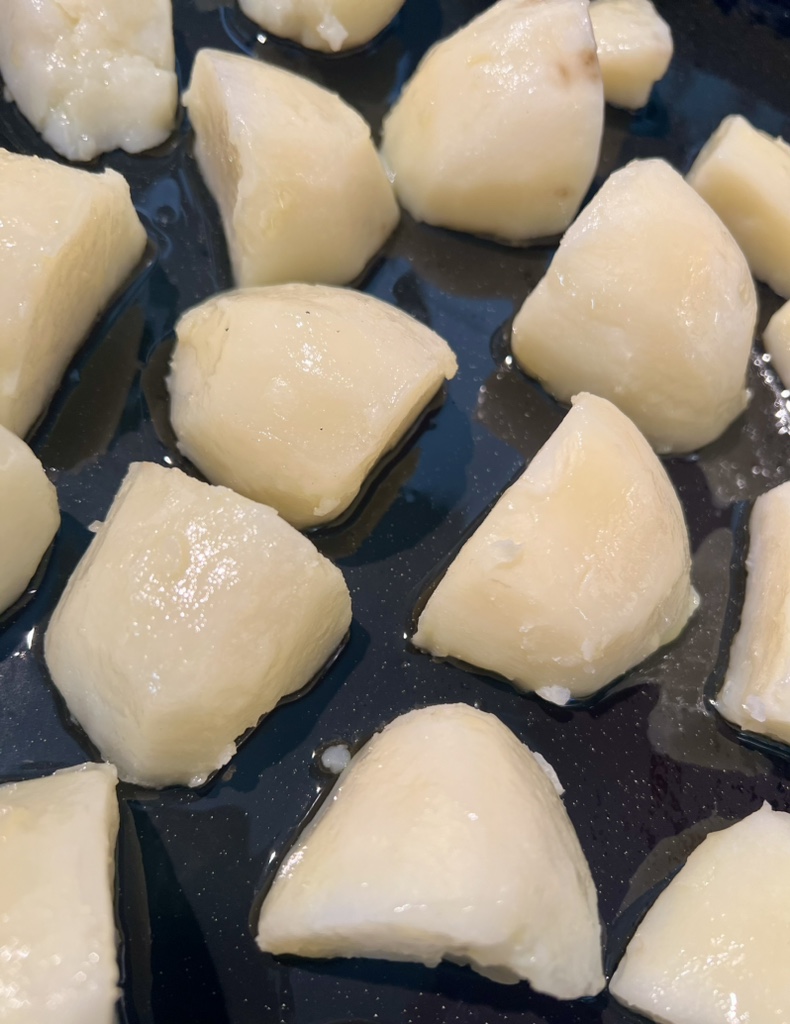
Then bake the potatoes for the first time for 20 minutes.
Remove the tray from the oven and turn the lightly browned potatoes over so that each side can come into contact with the heat from the fan and the oil.
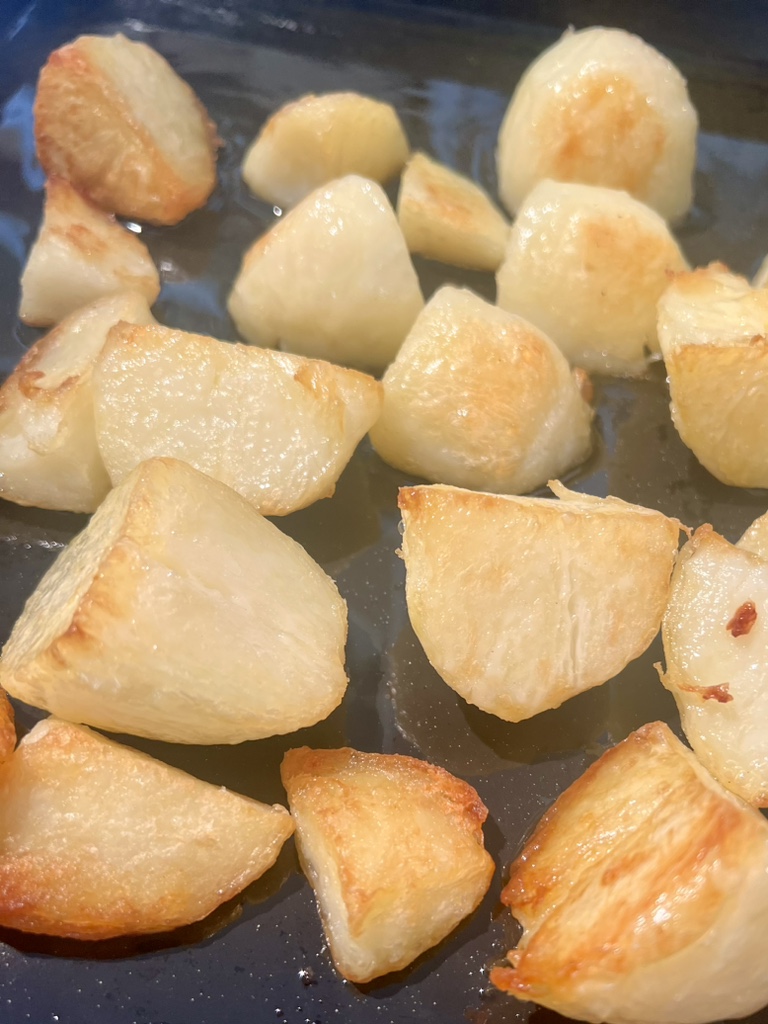
Bake again for 20 minutes.
The potatoes are then turned one last time and seasoned. Coarse sea salt is enough for this, but if you want to add more flavour, you can mix lightly crushed garlic cloves into the potatoes and add thyme leaves, for example.
Bake the potatoes for another 20 minutes, so they have been in the oven for a total of 1 hour. They should now be golden brown on all sides and incredibly crispy. They are extremely creamy on the inside because they have been cooked for so long.
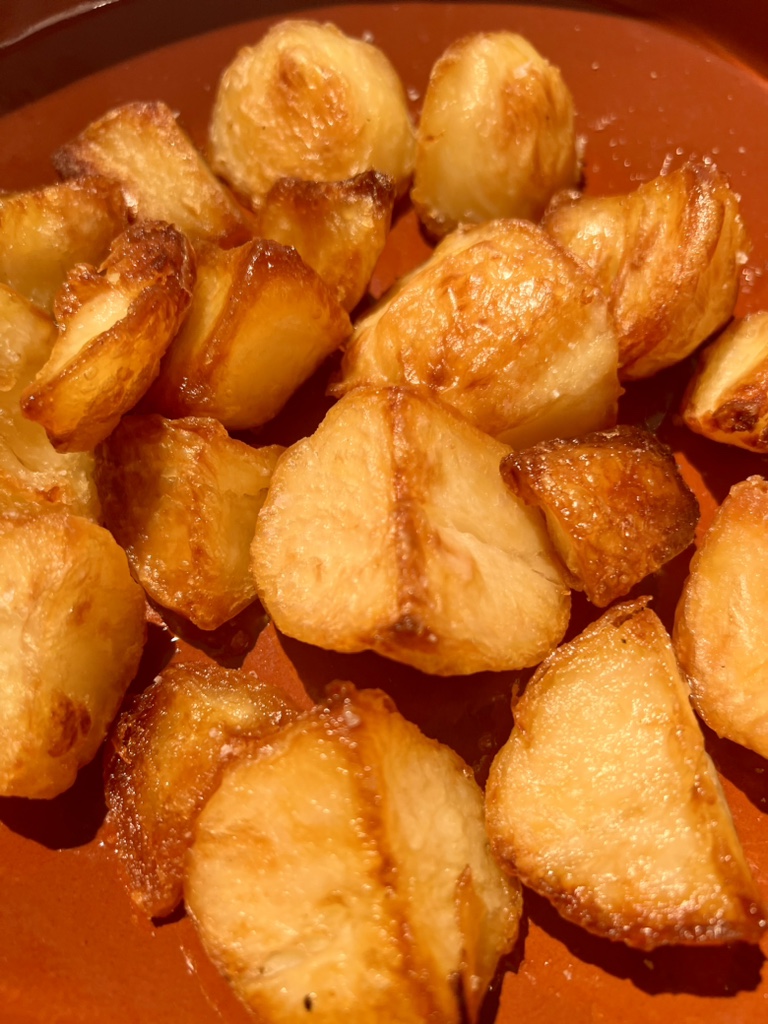
Otherwise, everything we wrote in the introduction applies. The only thing we advise is to increase the amount of potatoes, because you will want to eat the leftovers warmed up in the oven the next day.
Enjoy.
And may the taste be with you.
